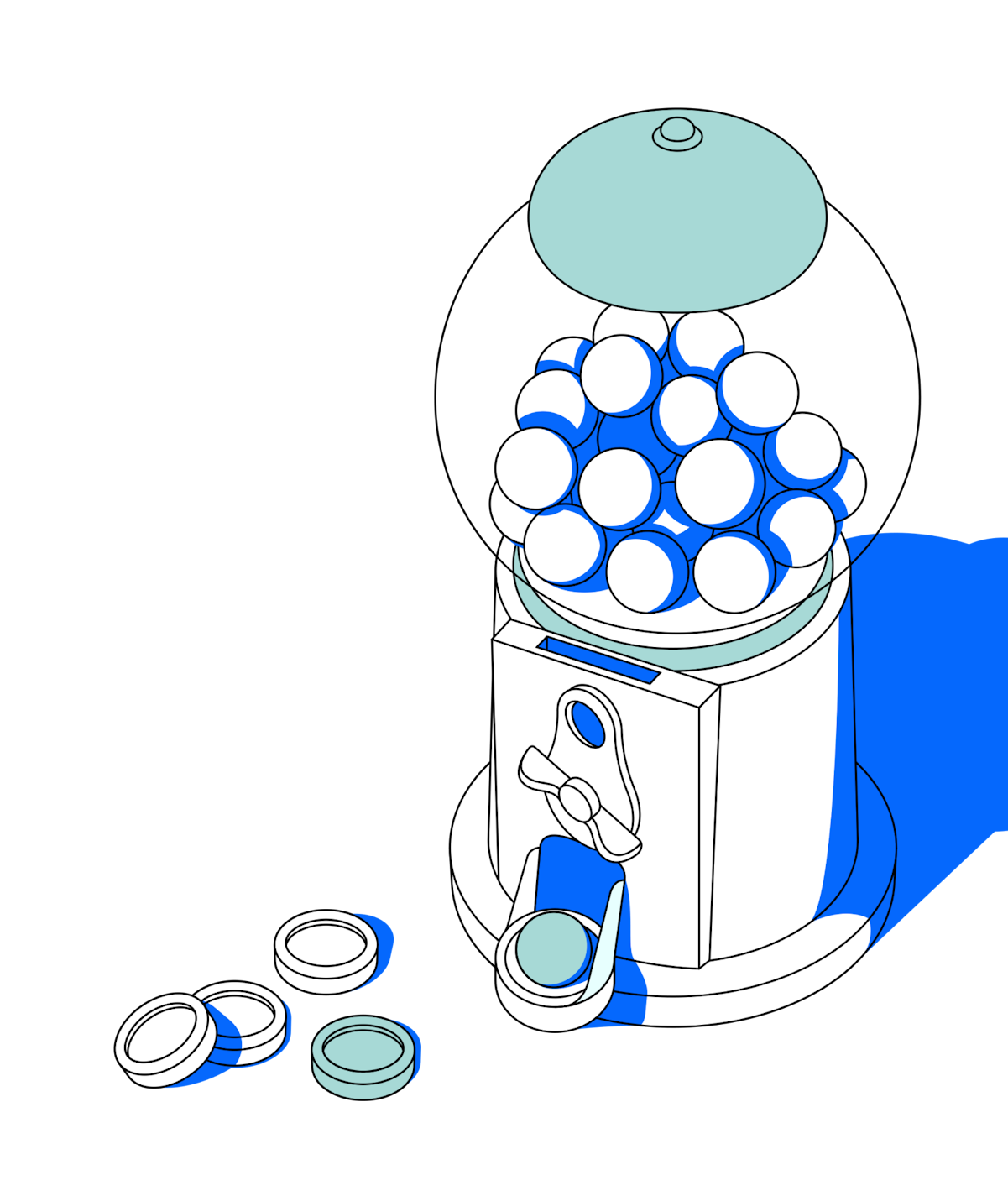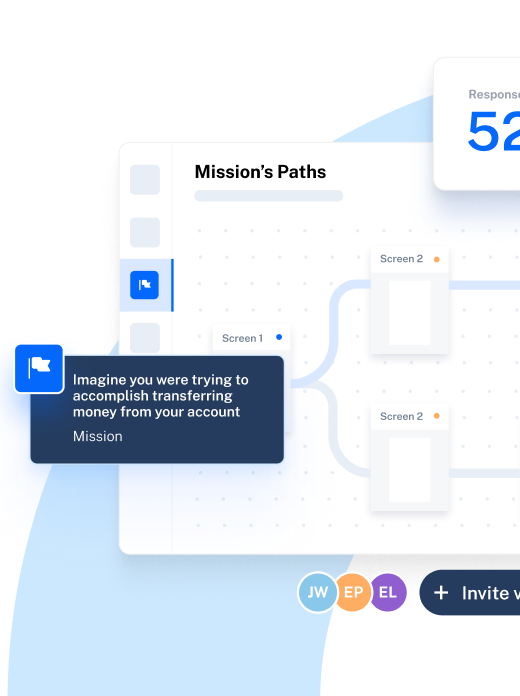If you’re reading this, you likely already know the value of user research.
You don’t need us to tell you why investing in UX research is important. You already know it’s fundamental for avoiding costly product discovery mistakes, building game-changing designs, and gathering data for informed decision-making.
But chances are, there’s still a few research skeptics in your organization, which leads us here. Part of the work of a UX research professional is the arduous task of convincing stakeholders of the value of UX research in business growth and success.
But how do you win them over and ensure resources are allocated to UX research?
Stick with us for six actionable tips to show stakeholders the value of UX research, and secure stakeholder buy-in on your next project.
Why do you need stakeholder buy-in for UX research?
Stakeholder buy-in is crucial to secure resources, support, and team alignment for your proposed UX research strategy or project. Without stakeholder buy-in, UX researchers struggle to conduct user research projects effectively and spread the value of user insights. At worst, the research function in an org can come to a total standstill.
Stakeholder buy-in is vital across multiple dimensions:
- Project-by-project basis: Buy-in for individual UX research studies is needed to help secure budget, support launches, and encourage cross-team engagement with the insights shared.
- Research strategy and wider research function: Support for an overarching UX research strategy is critical for resource allocation, help navigating red tape or budgeting issues, and democratizing research across the organization. Stakeholder buy-in to the wider research function is key to evangelizing research within an org and showcasing its value across the business.
- Interdepartmental alignment: Stakeholders are key to cultivating a user-centered culture and data-informed approach to design and decision-making across the org. Cross-team buy-in for UXR showcases the value of research and ensures insights are being utilized across departments.
UX research can be challenging enough without feeling like you’re fighting for budget and buy-in. By bringing stakeholders on board, you release user research from operating in a vacuum, so everyone in the organization can benefit from customer insights and, ultimately, build better products.
So, what are you up against?
Building a culture of learning comes directly from leadership. If you don’t have leaders who consistently prioritize being connected to customers, learning from them, and baking that into how the organization operates, no one else will be incentivized to do it.

Roy Opata Olende
UX Research & Research Ops Leader
Why is getting stakeholder buy-in hard?
Given the benefits, we wouldn’t blame you for wondering why stakeholders aren’t lining up to make UX research an integral part of their product development process.
While each company is unique, with their own reasoning behind stakeholder decisions, some of the main barriers to stakeholder buy-in include:
- UX research is misunderstood: Without transparent UX research processes and work to evangelize research, it’s easy to dismiss its value. Drawing clear lines from research to profit is challenging, so highlighting the impact of UX research via its connection to product decision-making and user results is crucial.
- Reluctance due to expenses: Many stakeholders don’t want to invest in UX research due to the misconception that it’s too expensive. Illustrating that the benefits of UX research outweighs the cost is pivotal in winning buy-in.
- Uncertainty about the outcomes: UX research isn’t the complete solution—it’s the conduit for solving the problem. It can be difficult to predict the results of research or provide immediate gratification—for many stakeholders, this uncertainty and delay in direct impact can cause reluctance to invest in UX.
Buy-in can be difficult—but it’s by no means impossible. Let’s get into how you can win the investment your UX work deserves.
6 Expert tips on how to get stakeholder buy-in for user research
Amat victoria curam. Victory loves preparation.
This Latin proverb hits the nail on the head when it comes to winning stakeholder buy-in for UX research. Preparing your discussion ahead of time and bringing relevant data—quantitative and qualitative—about the value of research is a key element in getting buy-in.
Speaking with Geoffrey Crofte, Senior UX Lead Designer at Foyer Group, we’ve compiled six expert tips to leave your stakeholders swooning over everything from user interviews to task analysis. Let’s dive in.
1. Speak their language, not yours
When making decisions, your stakeholders have several priorities in mind. These are always tied to wider business objectives and long-term strategies. The trick is to acknowledge these priorities and illustrate how UX research ultimately helps fulfill them sooner.
In the same way you research your users and build UX personas, you want to research your target audience and learn what’s important to them.
What are the business goals? Perhaps stakeholders are concerned with increased churn throughout last year. Maybe it’s all hands on deck for increasing acquisition within the quarter. It could be all about reducing overheads. Whatever it might be, identify the business objectives stakeholders have laid out for the whole team, and show them how user research aids this journey.
Geoffrey emphasizes the power of speaking to stakeholder motivation:
“You need to do your job the best you can, but also understand what motivates your stakeholders (money is obvious, but what else?). Demonstrate the benefits for the end users, yes, but also speak to the stakeholders’ motivations to get buy-in.”
Both you and your stakeholders are working towards shared goals of better products and fulfilling wider business objectives. It’s just a matter of putting it in their terms. Speaking directly to stakeholder interests and showing them how UX research can help navigate uncertainty and achieve success is crucial for securing buy-in.
2. Anticipate and address their pains and worries
While talking the talk may convince some of your stakeholders, you’re likely to run into pushback. You'll more than likely be thrown a few curve balls—which you’ll need to be prepared to hit out of the park.
That’s why it’s best to anticipate objections beforehand. The key here is empathy. What are the concerns and constraints your stakeholders have? If you can pinpoint these concerns beforehand and address them upfront, stakeholders will be more likely to buy in.
Some of the common objections include:
- Cost concerns: Stakeholders will be concerned about ROI when it comes to investing in UX research—how can you prove it’ll save money in the long run?
- Time constraints: Stakeholders might think the UX research process will take too long, slowing down the product development process—quell their convers with continuous research and rapid testing
- Skepticism on business value: Stakeholders will question the value of UX research, and how it impacts the product and business—show them case studies and lean into the power of democratization
Every company is unique, so stakeholder objections will vary. Consider holding stakeholder interviews to get an understanding of what matters to your leaders. Once you’ve identified key objections, move on to preemptively answering them.
3. Show, don’t tell
A picture’s worth a thousand words. It turns talk into tangible examples of UX success. Instead of simply telling stakeholders that UX research will solve their problems and produce better business outcomes, show them. Aim for case studies with wireframes, prototypes, storyboards, and visual data representations—everything you need to walk stakeholders through how UX research gets results.
If you’re already running research operations, show stakeholders what you’ve been working on. Present final designs, key user insights that informed design decisions, and the processes that got you there.
Perhaps you’ve conducted usability testing in the past. You can show stakeholders a Clip of a user struggling to complete a task, and detailing why the task at hand was so difficult. You can then follow up with the insights you extracted and how you implemented it in the design to improve usability, increase customer satisfaction, and, subsequently, boost customer retention.
Alternatively, if you’re on the Product team and trying to get your first UX research tool or investment for a new research project, show them case studies and results from similar organizations. Highlight the impact on business goals, improvement in customer experience, or use an ROI calculator or quotes from user interviews to highlight positive feedback.
💡 Looking for some statistics to help win-over stakeholders? These 30+ UX statistics prove the value of UX for organizations big and small.
4. Build a narrative and story
Working in a story alongside your UX visuals turns your presentation into a cohesive narrative—giving it a start, middle, and end. It provides stakeholders with a framework detailing what they can expect from UX research.
A narrative makes your case more engaging, relatable, and memorable—just remember to still include key data points, usability metrics, and focus on real user problems.
To build a narrative stakeholders will love, focus on these three key elements:
- Highlight the problem: Begin with a business problem your team is facing. It can be anything from increased churn to customer dissatisfaction. Highlight the problems users have with the product and how it impacts wider business objectives.
- Tell them how UX research can save the day: Weave the narrative to showcase how research is necessary to gain insights on user experience, including pain points, expectations, and perspectives. Show stakeholders the surveys or other UX research methods you’ll use to delve into the problem.
- Present the solution: Present stakeholders with specialized UX reports, and illustrate how the resulting UX research insights can inform product design decisions. Show how implementing those changes serves as a solution for your outlined problem, and explore the knock-on business impact.
Geoffrey suggests testing out your story with colleagues before presenting it to stakeholders:
“To make a consistent story, you need a good mix between facts and vision. The advice I try to keep for myself is this one: if you can tell a good story and get buy-in from non-research colleagues, you’re on the right path.”
Talking of colleagues…
5. Find allies in your organization
Getting stakeholder buy-in can be a difficult task for even the most confident UX professionals. The good news is you don’t need to go at it alone.
There’s power in numbers. Bring together the voices of other team members who believe in the power of UX research. With a team of experts championing the cause, you’ll have an increased chance of persuading your stakeholders.
Ask your allies to act as advocates for the benefits of UX research from their perspective. They can help you showcase all the ways user insights help across the business, from customer support to sales and marketing.
Utilize any UX research repository you have to highlight the far-reaching impact of research; and ask your colleagues to demonstrate how research helps them do their job better, to build a complete picture of research’s impact.
You’ll also benefit from the power of social proof—where stakeholders are subconsciously persuaded by the fact you’ve already got support from other stakeholders.
Geoffrey emphasizes creating an internal pilot project and showing it to your allies who have closer connections to stakeholders: "The best way to start is with an internal pilot project. Find allies in your organization who know how the political stuff works, and what strings you need to pull, then ask them to get involved from their own position."
Keep in mind to look for allies high and low. Designers aren’t the only ones who are passionate about user research. You’ll find developers, product managers, and marketers who are all on board with using user research to build organizations that learn.
6. Start with the important stuff
Finally, when presenting your solutions, research findings, and business case to stakeholders, remember to put your most important points at the start of the conversation. Your stakeholders are likely in meetings for a large part of the day. Attention spans dwindle, minds wander, people get bored or have to duck out early. Starting with the good stuff ensures you pique their interest and keep their attention. (It’s also a benefit when sharing the meeting notes or slide deck around the business later.)
For example, there’s no need to dive into the processes and methodologies you used during your last usability project from the get-go. What your stakeholders are really interested in are the business implications tied to your user research.
Start with quick, important takeaways that grab their attention and are too good to ignore. Once you’ve made the benefits abundantly clear, you’re ready to set your story in motion and cover the details while maintaining their undivided attention.
Prove the value of your UX research with Maze
Getting stakeholder buy-in can be challenging, but it’s by no means impossible. The perfect recipe requires lots of preparation, some well-informed strategies, and just enough schmoozing. Follow our tips above, and you’re more than ready to show stakeholders the UX research light.
When you do get the buy-in your UX research initiatives deserve, you’ll need a tool to see you through to success. Maze is the ultimate user research platform that helps you take UX research to the next level. Plus, with Maze’s visual-rich, automated reports, you can show stakeholders the fruits of your UX initiatives, making the benefits apparent and your case too good to ignore.
Frequently asked questions about how to get stakeholder buy-in
What is stakeholder buy-in?
What is stakeholder buy-in?
Stakeholder buy-in is the process of getting approval and support from stakeholders for a project or initiative. It involves convincing stakeholders of the value of a project so that they support it, provide the necessary resources, and help with overcoming obstacles.
Who are the stakeholders in user research?
Who are the stakeholders in user research?
In user research, stakeholders include anyone who has an interest or is impacted by the design of the product or service. This includes product managers, designers, developers, and executives and senior management.
How can you collaborate with stakeholders in UX research?
How can you collaborate with stakeholders in UX research?
You can collaborate with stakeholders in UX research by regularly updating them on your UX research projects—either through reports or meetings. You’ll also want to share key findings or even include them in workshops and collaborative sessions.



